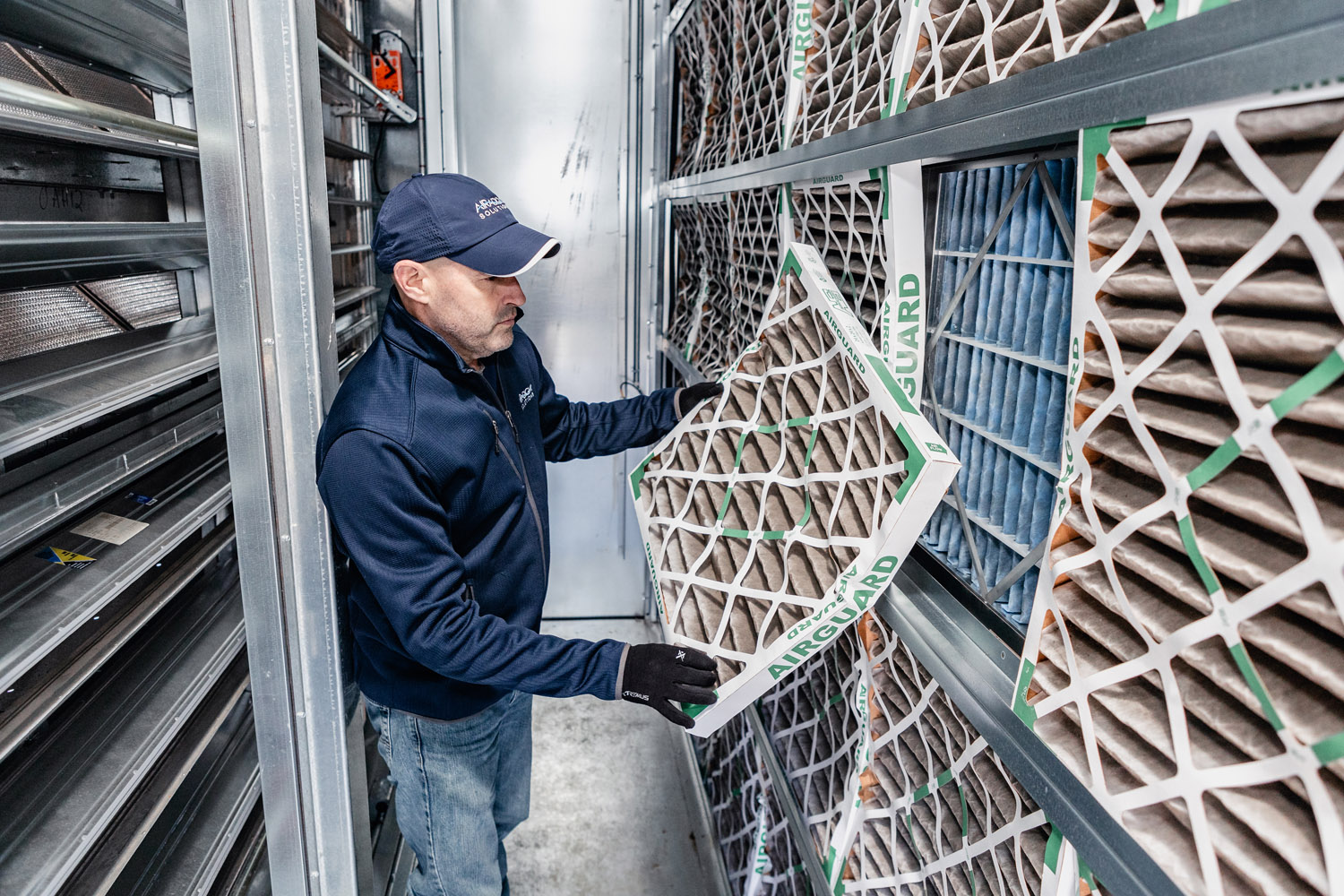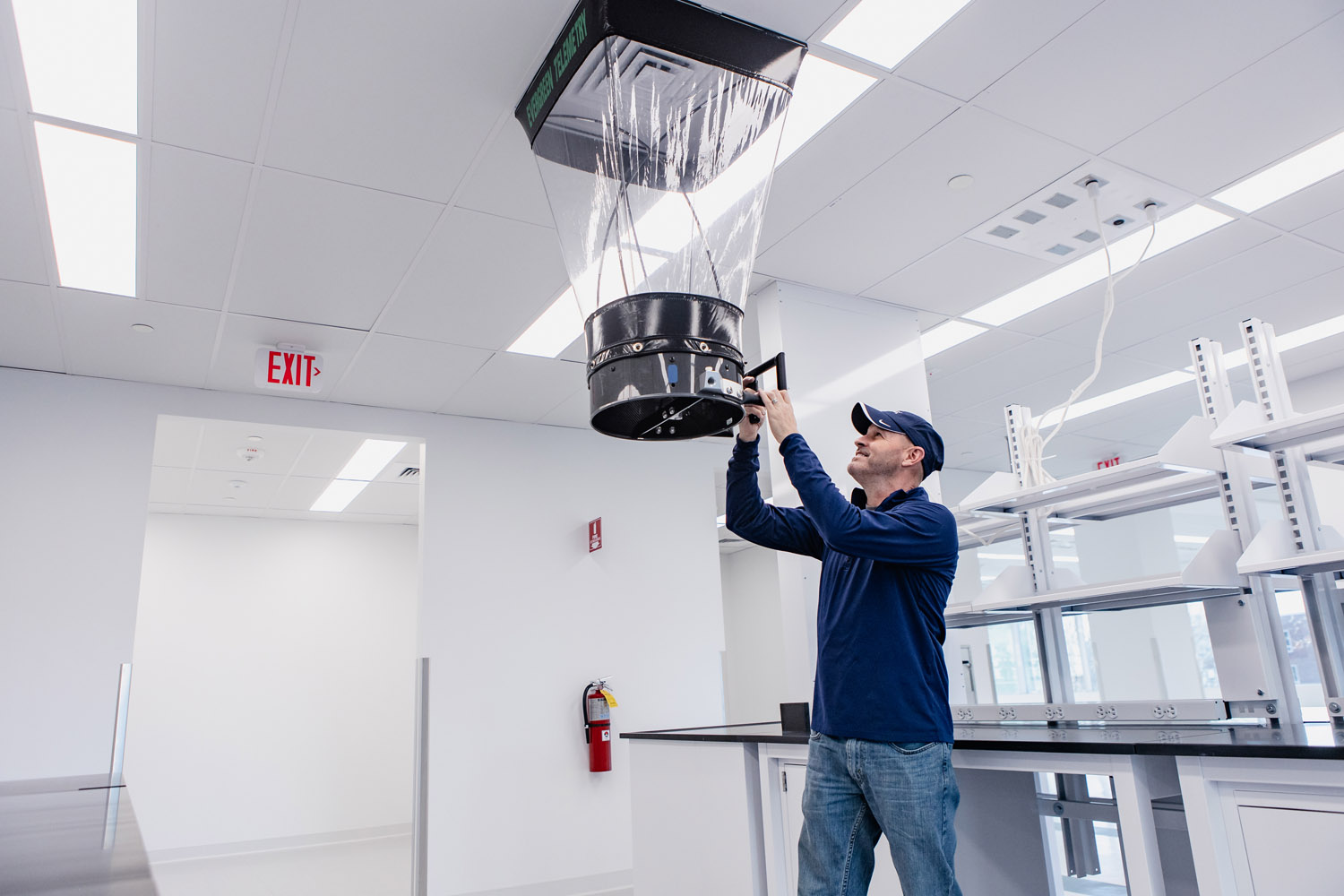Why Air Ventilation Plans Matter
Pandemic restrictions are lifting across the country, and it will soon be time for America’s restaurants to reopen for business. This is welcomed news for an industry that has taken a particularly hard hit during this crisis. To prepare, restaurant owners are developing plans to keep their staff and customers safe. They are following sterilization plans to keep surfaces and hands clean, as well as personal protective equipment (PPE) plans that instruct staff and customers to wear face, eye, and skin protection. To ensure restaurants are combatting COVID-19 on all fronts, we believe an air ventilation plan is just as essential as cleaning and PPE.
As business owners and facility managers prepare to reopen their locations, many have wondered whether their ventilation systems are safe. Some have asked if their HVAC systems could be adjusted to further reduce exposure to COVID-19 for their occupants. We have leveraged our 25+ years of air balancing experience, as well as the latest guidelines from the American Society of Heating, Refrigeration and Air-Conditioning Engineers (ASHRAE), to provide the following recommendations for restaurant air ventilation plans.
Consider Your Air Turnover Rate
Compared to most office spaces, retail shops, and even some medical facilities, restaurants, due to the design of their ventilation systems, may already be a safer environment for their customers and staff regarding the COVID-19 crisis. HVAC systems in restaurants are complex. You have a large exhaust hood over your cooking surfaces, supply air grilles in the dining room, exhaust grilles in the restrooms, and a make-up air unit for your kitchen. By design, these systems have a very high air turnover rate.
Air turnover rates are defined as how many times per hour your HVAC supply air recirculates through your units and filters. The more the air is recirculated, the healthier it becomes. Additionally, each recirculation is infused with fresh outside air.

The more the RECIRCULATION, the healthier the air.
These air turnover rates are defined as air changes per hour (ACH). Health departments do not allow hospitals to open if they cannot meet the minimum required ACH. To ensure a comfortable environment, a restaurant’s HVAC system typically creates an air turnover rate that is comparable to, or in some cases higher than, that of many medical facilities. The table below shows recommended design criteria comparing hospitals and restaurants.
For example, consider a typical 4,000-square-foot restaurant with 15-foot ceilings that can accommodate 150 customers. This space is designed to accommodate 40 tons of cooling, resulting in approximately 16,000 cubic feet per minute (CFM) of supply air entering the space. (The exact amount of cooling depends on many other factors; this is an approximate example.) Additionally, a 12-foot kitchen hood would deliver approximately 4,000 CFM of outside make-up air to offset the kitchen exhaust fans. This would yield a total of 20,000 CFM of supply air into the space.
By applying the air turnover formula (total supply air CFM x 60 minutes/hour ÷ volume in the space in cubic feet), we calculate 20 air changes per hour. This rate is comparable to most operating rooms. (20,000 CFM x 60 minutes/hour) / (4000 SqFt x 15 Ft) = 20 ACH.
Of course, we are not implying the air quality in a restaurant is as good as a hospital, but simply saying that the quantity of airflow movement is comparable. Many experts have suggested that large quantities of air movement help reduce the likelihood of infection, as the virus particles are carried away from people at a much faster rate. In our example above, this restaurant would be considered to have excellent air exchange rates compared to many other commercial buildings. With 20 ACH, the entire air space of the restaurant is being circulated once every three minutes.
In addition to air exchanges, all restaurants must introduce a certain amount of outside air to mix with the existing air in the space. Without detailing the required amount of fresh air for this example, conventional design may specify that approximately 15% of the total HVAC air should be mixed with outside air. We are also introducing outside air to make up for the difference in exhaust air from the kitchen hood.
In our example, 15% outside air of the 16,000 CFM of HVAC supply air plus 4,000 CFM from the kitchen hood equals 6,400 CFM of fresh air that must be introduced. That is 6,400 cubic feet of air from the outside pumped into the restaurant every minute. Another way to present this data is that 6.4 out of the 20 air exchanges per hour are directly from the outside.
To verify the quantities of outside air and air exchanges per hour, we recommend hiring a certified testing, adjusting and balancing (TAB) firm, as they have the proper skills and tools to measure the airflow for your restaurant.
Consider a Filter Upgrade
Filters are designed to filter out particles while still allowing as much free air to flow as possible. With today’s added airborne threats, ASHRAE is recommending upgrading to a higher-quality filter if your HVAC system can support this upgrade.
The HVAC industry utilizes a rating system known as the MERV rating, which stands for Minimum Efficiency Reporting Value. MERV values vary from 1 to 16. The higher the MERV value, the more efficiently the filter will trap airborne particles. ASHRAE is recommending upgrading to a MERV 13 or higher (MERV 14 is preferred) if your HVAC system can support it. These filters are designed to filter out bacteria and some airborne viruses. However, not all HVAC systems can handle higher-quality filters. Arbitrarily installing higher MERV filters without a TAB technician’s analysis could decrease the heating and cooling effectiveness of your system.
Regardless of the filter you select, it is essential to understand that filters must be changed regularly to maintain optimal system performance. When changing filters, ASHRAE recommends wearing complete personal protective equipment (PPE), including an N95 mask, gloves, and eye protection. These filters are designed to catch viruses on the filter media, so it is essential to protect yourself from these contaminants when handling the filter or performing any maintenance on the unit.

Check for Filter Frame Leakage
Once you have settled on the type of upgraded filter your system can handle, inspect the filter frame to ensure there are no air gaps. The filter should cover the entire frame space of the air entering the unit. Any gaps found around the frame and between the filters need to be sealed.
Double Check Your Building Pressure
To prevent bringing in unfiltered air, restaurants should operate under positive pressure conditions, where there is more outside air than exhaust air. Your air balancing technician can properly set the outside air intake of each unit to ensure it exceeds the amount of exhaust. This will reset your building to positive pressure, keeping out unfiltered air.
Other Sanitization Options
Some systems cannot function properly with MERV 13 or higher filters. If your system falls into this category, you still have options to sanitize your air in ways comparable to those used in hospitals.
Most hospitals install ultraviolet (UV) light sanitizers inside their HVAC units. The UV-C spectrum inactivates viral, bacterial, and fungal organisms, rendering them unable to replicate. These UV lights have been shown to destroy related coronaviruses, including MERS; however, as of this writing, it has not been conclusively proven that they kill COVID-19. These lights can be installed inside HVAC units, typically by a local HVAC contractor. This method is more expensive than the filter upgrades but provides an added layer of protection restaurants can use as a substitute for, or in addition to, higher-quality filters.
Don’t Forget to Clean Your Ceiling Diffusers
If you are spending time and money to have clean filters installed, do not forget to clean the ceiling diffusers as well. Even with regular filter maintenance, ceiling registers tend to accumulate dirt over time, but it’s not because your HVAC unit is delivering contaminated air. The dirty build-up is caused by air leaving the register at a high velocity and interacting with dust particles. This phenomenon is known as the Coanda Effect, also referred to as smudging.
ASHRAE recommends sanitizing all supply, return, and exhaust registers to be safe. This will provide a clean space for your conditioned air to travel, giving your occupants the added comfort of seeing clean registers.

Implementing Your Air Ventilation Plan
Many experts have suggested that large quantities of air movement help reduce the likelihood of infection. Without a vaccine, the best we can do in the fight against COVID-19 is take steps to mitigate the spread of infection. We are all accustomed to sterilization plans and PPE plans. However, as we begin reopening restaurants, we must also incorporate air ventilation plans to improve the air quality. The more mitigation steps we take, the better off we all are.
This article is written by Airadigm Solutions Chief Training Officer Brian Sharkey and was initially published in RFMA.